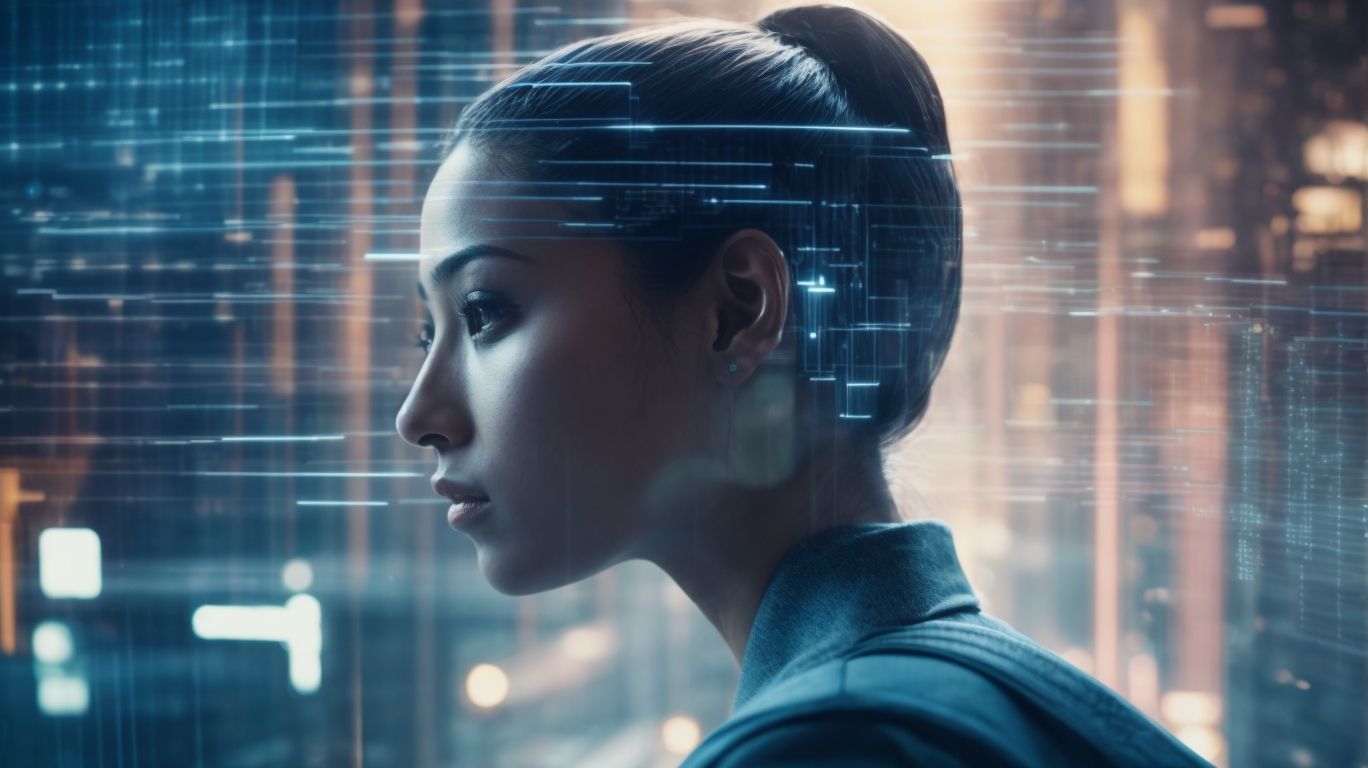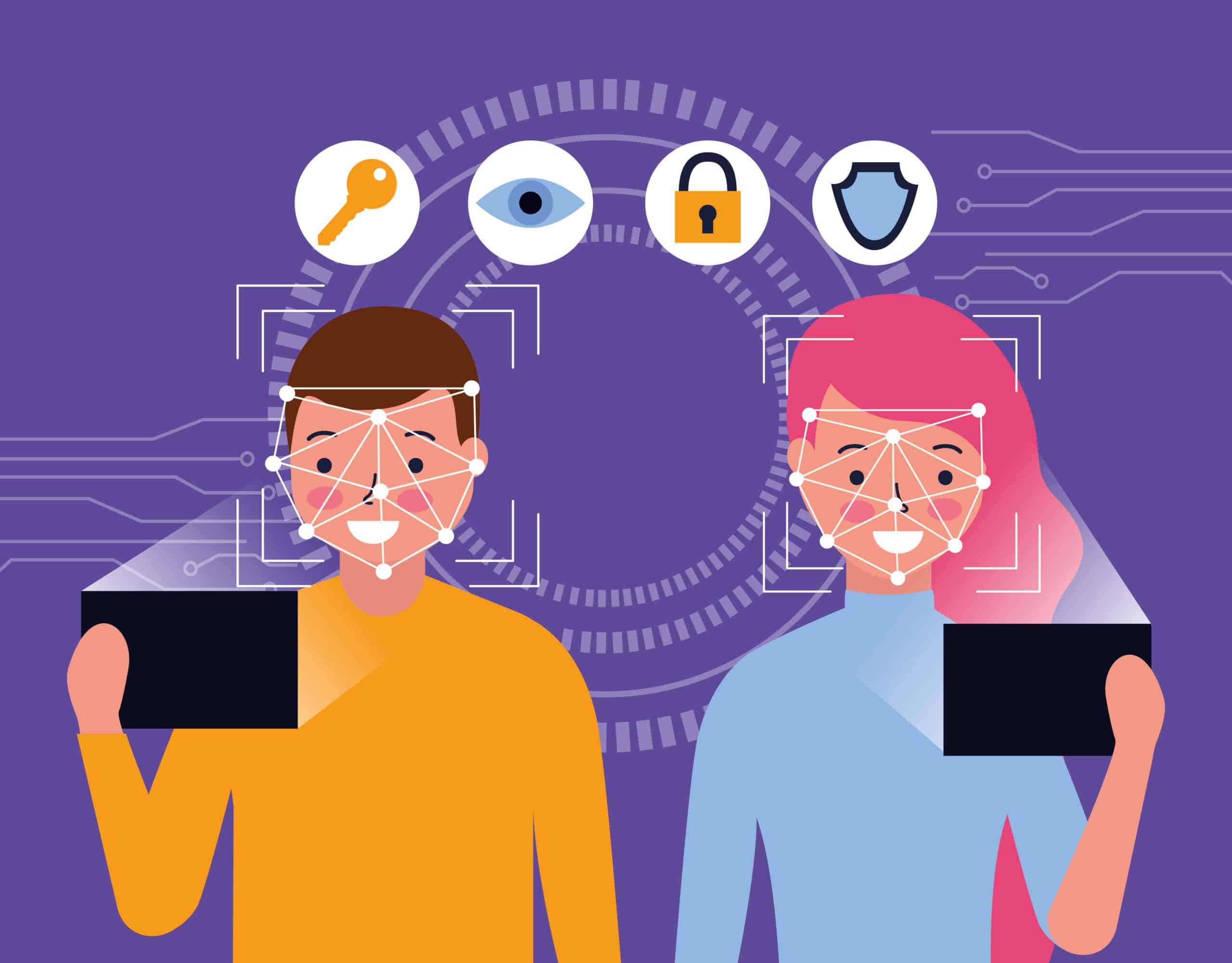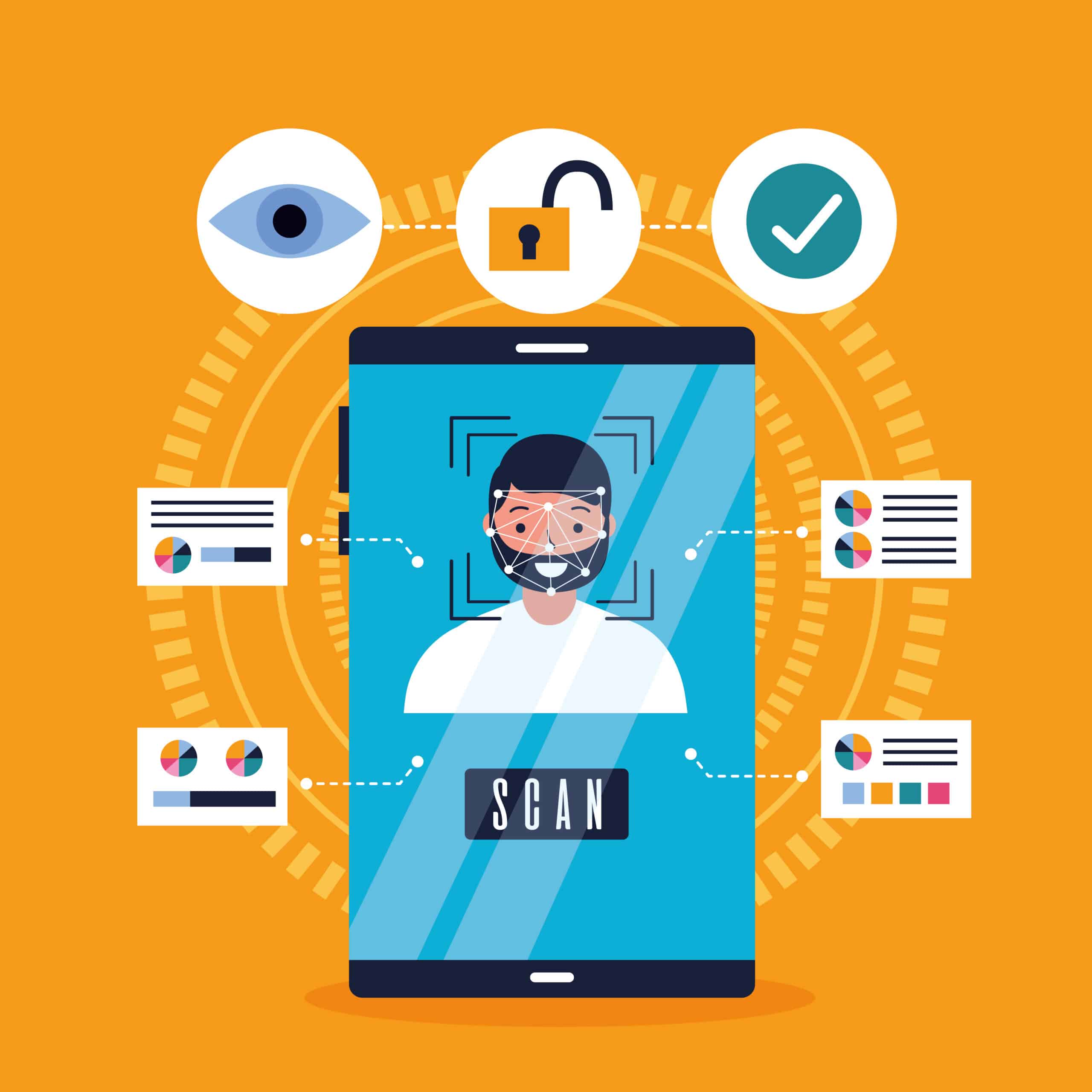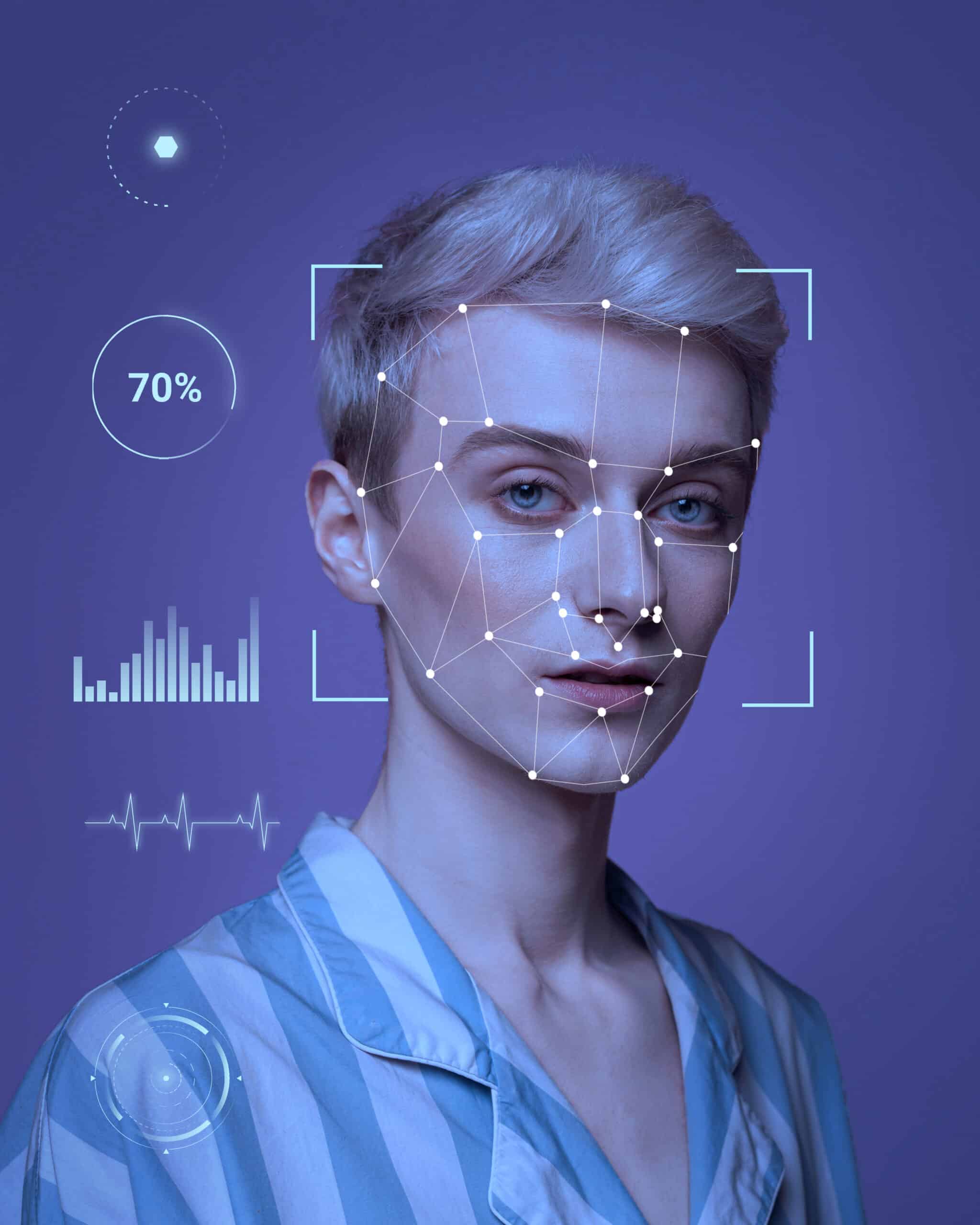Unlocking the Future: Facial Recognition as the Next Evolution of Identity Verification


Facial recognition technology has quickly become a popular method for identity verification in various industries.
From enhancing security to improving user experience, the benefits of this technology are undeniable.
Concerns about privacy, bias, and misuse have also been raised.
In this article, we will explore how facial recognition identity verification works, its current applications in areas like airport security and online banking, and what the future holds for this evolving technology.
Join us as we delve into the future landscape of authentication through facial recognition identity verification.
What Is Facial Recognition Identity Verification?
Facial Recognition Identity Verification is a process that authenticates a person’s identity by analyzing and matching their facial features with stored biometric data.
Biometric technology plays a crucial role in this process by capturing and storing unique biological characteristics such as facial patterns, which are difficult to forge or replicate.
Digital identity, established through Facial Recognition Identity Verification, offers a secure and convenient way for individuals to access various services and conduct transactions online.
Upholding stringent personal data protection measures is essential to safeguarding sensitive information collected during the verification process, ensuring that individuals’ privacy and security are maintained.
How Does Facial Recognition Identity Verification Work?
Facial Recognition Identity Verification operates by capturing facial images, extracting unique biometric features, conducting facial analysis, and comparing the data against stored profiles for user authentication.
This process begins with the capture of a user’s facial image through a camera or other optical device. The system then isolates distinctive facial markers such as the distance between the eyes, the width of the nose, and the shape of the jawline. These biometric features are turned into mathematical representations known as face templates.
The software analyzes these templates to create a unique facial signature for each individual. Subsequently, when a user attempts to access a system or device, their facial features are compared against pre-registered face templates to verify their identity. This meticulous authentication method enhances security measures and helps prevent unauthorized access.
What Are the Benefits of Facial Recognition Identity Verification?
Facial Recognition Identity Verification offers enhanced security measures, improved user privacy, and secure access control, utilizing multi-factor authentication to ensure robust identity security.
- By utilizing advanced facial recognition technology, this system accurately confirms the identity of users, reducing the risk of unauthorized access. In addition to traditional security methods, such as passwords or PINs, facial recognition adds an extra layer of protection against fraud and identity theft.
- This technology is not only convenient for users but also helps organizations comply with stringent security regulations. The seamless integration of facial recognition into access control systems enhances overall security protocols, making it a valuable tool in safeguarding sensitive information and preventing cybersecurity breaches.
Enhanced Security
One of the primary benefits of Facial Recognition Identity Verification is its ability to mitigate identity fraud, strengthen overall identity security, and enhance cybersecurity measures through advanced facial recognition software and technology.
Facial Recognition Identity Verification plays a crucial role in preventing unauthorized access to sensitive data and secure locations by requiring individuals to authenticate their identities through a unique facial scan. This technology not only verifies the identity of users in real-time but also serves as an additional layer of protection against fraudulent activities. By utilizing facial recognition software, organizations can bolster their security measures and ensure that only authorized personnel have access to confidential information, thereby reducing the risks associated with identity theft and cyber breaches.
Improved User Experience
Facial Recognition Identity Verification enhances the user experience by providing seamless and convenient authentication processes, leveraging advanced facial authentication methods, and staying at the forefront of facial recognition advancements in digital security.
This cutting-edge technology not only ensures secure access but also offers a more user-friendly approach compared to traditional methods like passwords or PINs. Users benefit from quicker and more reliable identity verification, eliminating the need to remember complex login credentials. The evolution of facial authentication methods has made it more accurate and efficient, reducing the chances of unauthorized access and enhancing overall security measures. Advancements in digital security continue to bolster the effectiveness of facial recognition systems, making them an increasingly integral part of modern authentication solutions.
Time and Cost Savings
Facial Recognition Identity Verification offers significant time and cost savings by streamlining authentication processes, leveraging efficient identity verification technology, and providing reliable facial recognition services that enhance overall biometric security measures.
This innovative technology works by capturing and analyzing unique facial features to verify an individual’s identity quickly and accurately. By automating the identification process, businesses can significantly reduce errors and fraud while enhancing security measures.
The seamless integration of facial recognition into various industries has revolutionized the way organizations handle identity verification, ensuring a more efficient and secure authentication process for both customers and employees. With its advanced algorithms and continuous advancements, facial recognition services continue to play a crucial role in strengthening biometric security systems worldwide.
What Are the Concerns and Criticisms of Facial Recognition Identity Verification?
Despite its advantages, Facial Recognition Identity Verification faces criticism related to privacy concerns, potential bias and inaccuracy issues, risks of identity theft, and challenges associated with verification techniques.
Privacy concerns surrounding Facial Recognition Identity Verification stem from worries about data security and the potential misuse of biometric information. Critics also express valid concerns about the possibility of racial or gender bias in the algorithms used, which could result in discriminatory outcomes.
The inherent risk of inaccuracies in facial recognition systems poses a threat to individuals’ rights and can lead to wrongful identifications. Identity theft is another significant worry, as the misuse of facial data could result in fraudulent activities and breaches of personal information. The challenges of ensuring reliable and secure verification techniques further compound these issues.
Privacy Concerns
Privacy concerns are a significant drawback of Facial Recognition Identity Verification, as the technology raises questions about the collection, storage, and protection of sensitive facial data, impacting overall privacy protection measures.
The handling of facial data in the context of identity verification processes has sparked debates on the potential misuse of personal information. With facial recognition systems becoming more prevalent in various sectors, such as banking, law enforcement, and retail, there is a growing need to address the associated privacy implications. Regulations governing the use of facial recognition technology are crucial to safeguarding individuals’ privacy rights and ensuring that their facial data is not misused or exploited for unauthorized purposes.
Bias and Inaccuracy
Bias and inaccuracy issues in Facial Recognition Identity Verification stem from challenges in facial matching accuracy and the potential biases embedded in facial recognition algorithms, impacting the reliability and fairness of the verification process.
Facial recognition technology relies on intricate algorithms to analyze and compare specific facial features. The complexity of facial matching poses a significant obstacle as it involves identifying unique patterns in various lighting conditions, angles, and facial expressions.
These challenges can lead to errors, false positives, and mismatches, further exacerbating concerns about accuracy and fairness. The role of algorithms in generating biases cannot be overlooked, as they are designed based on the data fed into them, potentially perpetuating existing societal biases.
As a result, the reliability and fairness of facial recognition identity verification are called into question, requiring ongoing scrutiny and advancements in technology to mitigate these issues.
Potential for Misuse
The potential for misuse is a critical criticism of Facial Recognition Identity Verification, as it raises issues related to unauthorized facial identification, misuse of identity validation processes, and the implications of such actions on individual privacy and security.
Unauthorized facial identification poses a significant threat as it can lead to false positive matches, mistakenly associating individuals with criminal activities or breaching their privacy. The misuse of identity validation procedures through facial recognition technology opens doors for fraudsters to impersonate others, gain access to sensitive information, or commit crimes under someone else’s identity. These risks not only undermine the accuracy of identity verification systems but also erode trust in the security of personal data, highlighting the urgent need for stringent regulations to safeguard privacy and prevent potential abuses.
What Are the Current Applications of Facial Recognition Identity Verification?
Facial Recognition Identity Verification finds applications in diverse sectors such as airport security, mobile device unlocking, and online banking, utilizing advanced facial recognition solutions and authentication systems for enhanced security measures.
In airport security protocols, facial recognition technology plays a crucial role in identifying passengers and personnel, enhancing the efficiency of security checks and ensuring a safer travel environment.
Mobile device authentication methods have evolved to include facial recognition as a secure and convenient way to unlock smartphones and tablets, offering a seamless user experience.
Online banking procedures also benefit from the use of facial recognition for biometric authentication, providing an additional layer of security for financial transactions and account access.”
Airport Security
Facial Recognition Identity Verification is prominently employed in airport security measures, facilitating efficient identity verification processes and deploying cutting-edge facial recognition technology to enhance overall security protocols.
This advanced technology allows airports to quickly and accurately match passengers’ faces with their travel documents, reducing the need for manual document checks and saving time. By automating the identification process, facial recognition helps improve the speed and efficiency of security checks, leading to smoother passenger flows and decreased wait times.
The integration of facial recognition technology enhances security measures by detecting any discrepancies or potential threats more effectively than traditional methods, ensuring a safer travel environment for all passengers.
Mobile Device Unlocking
Facial Recognition Identity Verification is utilized in mobile device unlocking mechanisms, leveraging advanced authentication systems that analyze unique facial patterns for secure access to personal devices.
By incorporating Facial Recognition Identity Verification into mobile devices, users can conveniently unlock their smartphones by simply scanning their face, providing a seamless and secure authentication process. The role of authentication systems in analyzing these facial patterns is crucial, as it ensures that only authorized individuals can access the device. This advanced technology offers a high level of security, as each person’s facial features are distinct and difficult to replicate, making it a reliable method for ensuring secure access to personal information stored on mobile devices.
Online Banking and Transactions
Facial Recognition Identity Verification is increasingly employed in online banking services and transactions, offering robust identity verification solutions, secure access controls, and advanced verification techniques for enhanced financial security.
This technology enables users to securely authenticate their identities through facial biometrics, adding an additional layer of protection to prevent unauthorized access to sensitive financial information. By integrating facial recognition into online banking platforms, institutions can ensure a seamless and efficient user experience while minimizing the risks associated with traditional authentication methods like passwords or security questions. With the ability to accurately verify users’ identities in real-time, financial institutions can mitigate fraud and identity theft, ultimately providing customers with a more secure and convenient banking experience.
What Is the Future of Facial Recognition Identity Verification?
The future of Facial Recognition Identity Verification holds promises of advancements in technology, evolving cybersecurity measures, and the integration of innovative trends, shaping a dynamic landscape for the application of facial recognition technology.
From improving security measures in banking institutions to offering seamless access control in smart homes, the potential applications of facial recognition technology seem boundless. As technology continues to evolve, we can expect to see enhanced accuracy and speed in identity verification processes, making it easier and more secure for individuals to access various services.
The integration of facial recognition in sectors such as healthcare and retail is likely to transform customer experience and streamline operations, paving the way for a more interconnected and efficient future.
Expansion into Other Industries
Facial Recognition Identity Verification is poised to expand into various industries beyond security and authentication, integrating facial recognition technologies into diverse sectors for enhanced identity validation and secure access control.
The potential integration of facial recognition in industries such as healthcare, banking, and retail holds great promise. In healthcare, facial recognition can streamline patient identification processes and enhance data security. Banks can utilize this technology for secure customer authentication during transactions. Retailers can implement facial recognition for personalized shopping experiences and to prevent fraud. Beyond traditional security applications, facial recognition is becoming a key player in authentication processes across different sectors, offering a convenient and secure way to verify identities.
Integration with Other Technologies
The future of Facial Recognition Identity Verification entails integration with cutting-edge technologies such as machine learning, fostering authenticity verification processes, and bolstering identity validation mechanisms for enhanced security measures.
This amalgamation of facial recognition technology with machine learning algorithms provides a dynamic framework for continuously improving the accuracy and reliability of identity verification systems. Additionally, by leveraging artificial intelligence capabilities, these systems can adapt and learn from new data inputs, creating more robust and adaptive means of confirming individual identities. Through this synergy, the security and efficiency of authentication processes are significantly heightened, resulting in a more seamless and secure user experience across various applications and industries.
Continued Advancements in Accuracy and Security
The future landscape of Facial Recognition Identity Verification will witness continual advancements in accuracy and security, driven by innovations in facial imaging, sophisticated verification systems, and the utilization of advanced facial biometric data for robust authentication processes.
These advancements are reshaping the way organizations handle identity verification, offering greater levels of precision and reliability.
Facial imaging technologies have evolved rapidly, enabling facial recognition systems to analyze minute details with striking accuracy. Verification systems play a crucial role in enhancing the overall accuracy of the process, ensuring that they grant access only to authorized individuals.
The utilization of facial biometric data adds an extra layer of security, making authentication processes more resistant to unauthorized access attempts.
Frequently Asked Questions
What is the future landscape of authentication?
The future landscape of authentication is shifting towards advanced technologies, such as facial recognition, to verify identity and access systems and information securely.
How does facial recognition play a role in identity verification?
Facial recognition technology uses biometric data to analyze and compare an individual’s facial features to a database of reference images, providing a secure and accurate way to verify identity.
What are the advantages of using facial recognition for identity verification?
Facial recognition offers several advantages, including increased security, convenience, and efficiency. It eliminates the need for physical documents and passwords, making it a faster and more seamless process.
Is facial recognition technology safe for identity verification?
Facial recognition technology uses advanced algorithms and encryption to protect an individual’s biometric data, making it a secure method of identity verification.
How will facial recognition impact the future of authentication?
Experts anticipate that facial recognition will emerge as the primary method of identity verification in the future, offering a more secure and efficient means of accessing systems and information.
Are there any potential concerns or drawbacks with facial recognition for identity verification?
Some potential concerns with facial recognition technology include privacy issues and the potential for inaccuracies or biases in the analysis of facial features. It is important for companies to address these concerns and continuously improve the technology for fair and effective use.



